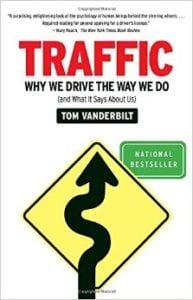How Well Do Driving Safety Signs Work?
A few years ago, someone wrote an irate letter to his local newspaper about the deer warning signs put up on a local highway. He couldn’t understand why they were always on busy highways. Wouldn’t it reduce accidents if the deer were told to cross smaller roads instead?
We may laugh, but the story does bring up an interesting point. Just how effective are traffic warning signs? They can be found wherever we travel, from the common “sharp curve ahead” to the more esoteric, such as the “moose warning” signs in Newfoundland. Highway safety departments consider them an important part of improving driving safety. But how well do they work?
Apparently, the answer is somewhere between “not great” and “we’re not sure.” There’s little research on the effectiveness of highway traffic signs and what there is shows that a surprising lack of effectiveness. For example, the Minnesota Department of Transportation has admitted:
“Signs that alert drivers to infrequent encounters or possible situations–such as deer crossing or children playing—do not have a consistent impact on driver behavior. Widespread use or misuse of warning signs reduces their overall effectiveness.”

Tom Vanderbilt, author of Traffic: Why We Drive the Way We Do (and What It Says About Us), says:
“[D]rivers routinely see signs warning of deer crossings (in the United States) or elephant crossings (in Sri Lanka) or camel signs (in Tunisia). It is difficult to say what is going on in the mind of a driver whenever he or she sees a deer or elephant or camel crossing sign, but studies have shown that most drivers do not change their speed at all.”
Surprisingly little work has been put into studying the effectiveness of traffic signs, considering how they can be seen on every highway or busy city street. What studies have been done have not shown signage has a strong effect on reducing accidents in dangerous areas. In fact, many experts believe that the main purpose of traffic warning signs is not to reduce accidents but to provide liability protection for the government that posts them.
Why Aren’t They Successful?
So, why don’t traffic signs work like they should? Many reasons are likely at play. Marc Green, in his article The Psychology of Warnings says compliance with warning signs involves the driver making a cost-benefit analysis, where he or she balances the following factors:
- Cost of compliance – most traffic signs, in their most basic message, say “slow down, because something ahead is dangerous.” The driver will (consciously or not) factor in the inconvenience of being late, or their dislike of being slow, as part of the cost of compliance. Green notes this is a similar problem with product warning labels. “Increased time reading” can be seen as a “cost of compliance”. Who’s going to read an entire product label when there’s a rush job to be done?
- Danger perception – this is the old risk versus hazard issue. Most drivers will stop at stop signs, because they understand that if they don’t, they significantly increase their risk of getting hit. But if you drive a road for years and never see a deer, you may come to feel that even if the consequences of hitting a deer are high, the risk of that ever happening is low. Paradoxically, people who feel confident in their driving skills more likely to ignore such signs. Green points out “[o]ne of the ironies of warnings is that the more experienced and skilled the viewer, the stronger the familiarization effect and the more likely that the warning will be ignored. For example, diving team members are the most likely people to ignore “no diving” signs.” Further, herd behavior can be a factor; if everyone speeds, it appears to be safer than if everyone slows down.
Each driver will evaluate these two factors and make a (perhaps unconscious) decision to obey the sign or to ignore it and risk something nasty happening down the road.
Complying & Understanding
There are many ways safety experts are now working to determine what psychological factors make people decide to obey traffic signs. For example, the effectiveness of signs can be diluted if they appear everywhere, so signs may be posted only where significant hazards truly exist. Green mentions
“People have unconsciously learned the general rule that signs and signals grow in size and vividness with their importance, presumably so that they will be more readily seen. Viewers will then likely interpret warnings that are small, faint, or located peripherally as signaling lower risk.”
These factors apply to all drivers, but they also are an important issue for workplace and consumer safety labels. Designers of OSHA or WHMIS labels must, of course, comply with the regulations, but understanding the psychology of safety warnings is also important when trying to create an effective label design. The label must be able to persuade the reader that compliance is really the most cost-beneficial response. By studying what we’ve learned about highway signs, we can learn what psychological nuances improve the likelihood that users will comply with the label.
Fortunately, OSHA and WHMIS labels include precautionary phrases that specifically instruct the user in what to do to ensure safety, a feature sometimes lacking in traffic signs. For example, when confronted by a “falling rocks” sign, what should a driver do? Avoid the area? Wear a hard hat when going through the zone? And I was always perplexed on how drivers transversing a typical single-lane Scottish highway were expected to respond to the ominous warning on blind curves – “Oncoming traffic may be in centre of road” – that gave drivers no suggestion for how to negotiate the curve safely.
Have you seen any particularly effective or ineffective traffic signs? If so, let us know in the comment section. And if you have questions about labelling for workplace or transportation safety, contact ICC Compliance Center at 1.888.442.9628 (USA) or 1.888.977.4834 (Canada).






 ICC USA
ICC USA ICC Canada
ICC Canada